"Bird colonies of Langara and Cox Islands in the Queen Charlotte Islands." (BC Archives)
"Documentary on the nesting and feeding habits of birds found in Norfolk and Lincolnshire and filmed from a hide over a two-month period. Birds seen are: common plover, redshank, whooper swan, mute swan, bittern, ringed plover, oyster catcher, black-head gull, bearded tit, sedge warbler, reed bunting, red hawk, snipe and Montagu's harrier." (EAFA Database)
"In Birds of a Feather, Edmund Zacher, II, ACL, exhibits the patience and skill necessary to compile a complete story entirely with telephoto lenses. All the particular points which must needs be observed to make successful telephoto pictures — careful centering, sharp focusing and rigid camera support — are exhibited in this film, which is interesting withal, as it tells the story of a thrush family from the time the youngsters are hatched until the last laggard leaves the nest. Some scenes, which show the parent bird in closeup by means of telephoto magnification and in which the bird fills the entire frame, are truly remarkable. Good fortune gave Mr. Zacher the beautiful background of a flowering tree for this springtime idyll. A suitable musical background — compiled from discs — accompanies the film. Mr. Zacher made this picture entirely from a window in his home, and his patience and skill in capturing every needed shot are remarkable." Movie Makers, Dec. 1934, 534.
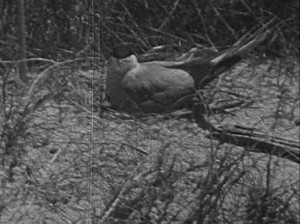
"The film concentrates on the birds, particularly the common tern, the little tern and the oyster catcher" (EAFA Database).
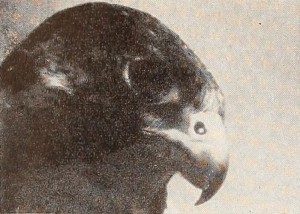
"You wouldn't think that just one movie maker could shoot all this footage (2400) on birds — no matter how interested and informed he was on the subject. And if that was the way you felt, you would be dead right. For Birds of Washington is the joint work of two men, J. Don Sutherland and Ralph E. Lawrence, who, because they customarily screen their films together, chose to submit them as one contest entry. Both, in any case, are highly competent movie makers and soundly informed students of bird life. For example, they preface briefly each new subject grouping with a pictorial survey of the type of terrain in which the birds will be found. Makes the film that much more informative. Outstanding, in our recollections, are their sequences on the American bald eagle and on an owl — whose family tree we regret we cannot recall." Movie Makers, Dec. 1952, 340.
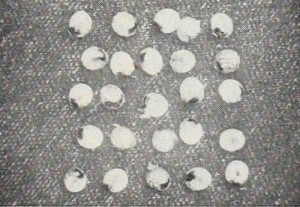
"Citheronia Regalis, the Royal Walnut Moth, or Hickory Horned Devil are some of the ringing appellations admiring entomologists have given the colorful caterpillar on which Jay T. Fox has chosen to turn his microcinematographic attention. The result, The Birth of a Caterpillar, is an excellent example of scientific filming. In it, Mr. Fox records the egg, embryonic and finally emerging stages of his subject with sound scientific knowledge, exceptional technical ability and obvious patience." Movie Makers, Dec. 1950, 468.
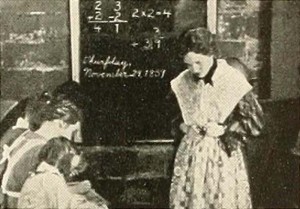
"The Birth of St. Mary's, by Robert F. Gowen. is a deeply moving and well nigh incredible accomplishment in amateur film production. Described as a chronicle in retrospect by the church that it pictures, the film moves bravely into the treacherous domain of costume drama and emerges triumphant. To recreate the gracious life of another day, to catch the feeling of its clothes and the flavor of its customs, to stage all of this against settings not only dramatically sound but full of beauty as well — such were but part of the problems of the producer. Perhaps greatest of all was the task of carrying on each step of this work with the willing, but often wilting, help of an entire community, the accomplishment, through infinite patience, of holding this group together for an entire year. Mr. Gowen has done it all superbly well. To this triumph of teamwork he has added sensitive direction, finished acting by his players and genuinely first rank color photography of largely interior setting. A double turntable musical score, carefully selected for historical accuracy, accompanies the production. The Birth of St. Mary's is a loving and lovely testimony, destined to increase steadily in stature as it becomes itself a part of the past." Movie Makers, Dec. 1937, 602-603.
"Amateurs in cinematography, members of the Manchester Film Society, which was formed last year by Mr Peter Le Neve Foster, one of the founders of Cambridge Cinema Club, have almost completed its second film, “The Black Bear”, based on the story “The Fool of Chester”. Mr Foster directed the film and Miss. R. Tongue manipulated the camera. The length of the film is about 1,000 feet, and it will be presented in about one month’s time. The promoters of this enterprise are hopeful of being able to secure sufficient local bookings to cover the major part of the outlay. With the exception of making prints, the whole work of production has been undertaken by the Society, which hopes someday to be able to purchase the necessary apparatus enabling them to do even this work themselves. Nearly all the scenes were “shot” in Cheshire" (Anon 1928, 47).
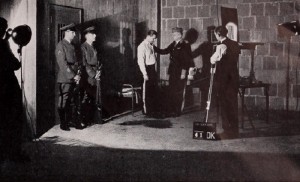
"Everyone is familiar with the fine work turned out by the Greenbrier Amateur Movie Club of White Sulphur Springs, W. Va. This club was given the fourth prize for their production "The Black Door," which has been honored in other contests conducted both here and abroad. This organization shows a fine sense of production values and an insight into what is required to build the proper suspense in motion picture entertainment." American Cinematographer, Dec. 1932, 7
"Delmer J. Frazier, ACL, of Oakland, Calif., is a man who can see the fine possibilities for plot ideas sticking out all about him in the current popular magazines. In his delightful film, Black Magic, he used an advertisement, but stories and funny papers are pretty fertile too. His story opened with the young lad of the house immersed in the mystic joys offered by a pancake flour company. ''Send Ten Wrappers and Get the Magic Wand!" He did, the wand arrived and the fun began. Fun, until his chum said the wrong magic words and started to disappear — wand and all. Only heroic measures on the part of our hero (and the cameraman) saved the day." Movie Makers, April 1935, 167.
"This was a well thought picture, but lacked a bit in photography to stack up with the prize winners." American Cinematographer, Feb. 1936, 73.
Total Pages: 203